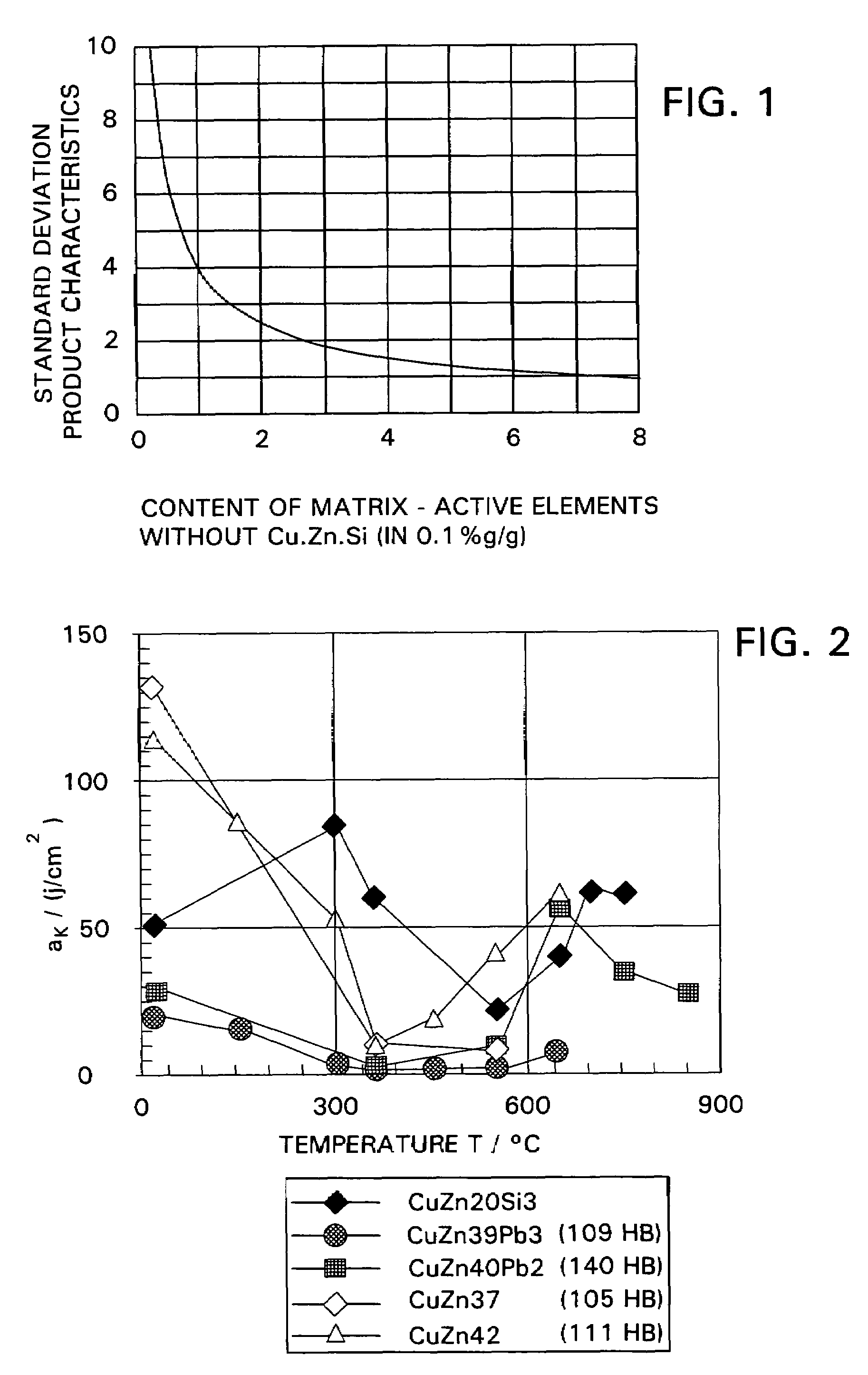Lead-free copper alloy and a method of manufacture
a technology of copper alloy and manufacturing method, which is applied in the field of copper alloy, can solve the problems of reducing the environmental impact of the factory, reducing the recycling of materials based on separation or division, and affecting the production process
- Summary
- Abstract
- Description
- Claims
- Application Information
AI Technical Summary
Benefits of technology
Problems solved by technology
Method used
Image
Examples
Embodiment Construction
[0020]The invention is based on the premise that the suitable combination of the alloy elements and the characteristics resulting from a cooperation of the individual parts all together meet the expectations demanded from the alloy and thus the requirement for the material should be covered. The material should, for this purpose, at the same time be distinguished by
[0021]the absence of toxic elements,
[0022]a good machining property,
[0023]a good workability,
[0024]a high corrosion resistance,
[0025]an increased strength level with an equally high ductility compared to lead-containing machinable brass,
[0026]a capability for mass production in a mill for partially finished products, and
[0027]a robust manufacture, namely, a manufacture not sensitive with respect to fluctuating operating parameters, in a mill for partially finished products.
[0028]The copper alloy is, for this purpose, designed as a Si-containing CuZn alloy (naval brass) without toxic additives. Naturally the demands for a ...
PUM
| Property | Measurement | Unit |
|---|---|---|
| Fraction | aaaaa | aaaaa |
| Fraction | aaaaa | aaaaa |
| Fraction | aaaaa | aaaaa |
Abstract
Description
Claims
Application Information
 Login to View More
Login to View More - R&D
- Intellectual Property
- Life Sciences
- Materials
- Tech Scout
- Unparalleled Data Quality
- Higher Quality Content
- 60% Fewer Hallucinations
Browse by: Latest US Patents, China's latest patents, Technical Efficacy Thesaurus, Application Domain, Technology Topic, Popular Technical Reports.
© 2025 PatSnap. All rights reserved.Legal|Privacy policy|Modern Slavery Act Transparency Statement|Sitemap|About US| Contact US: help@patsnap.com


